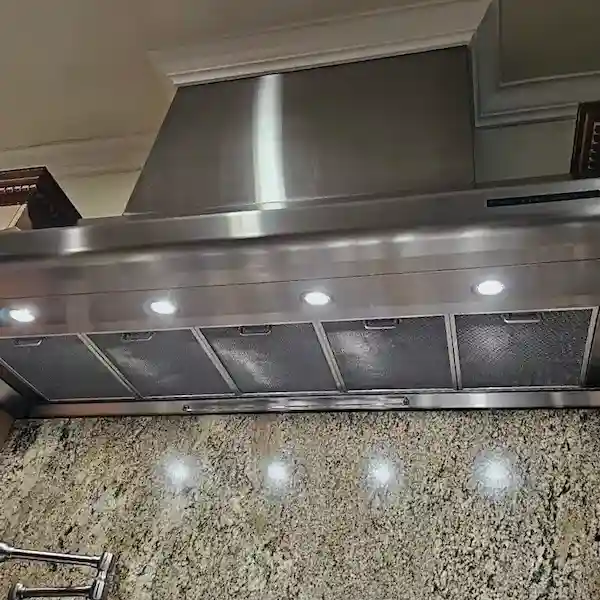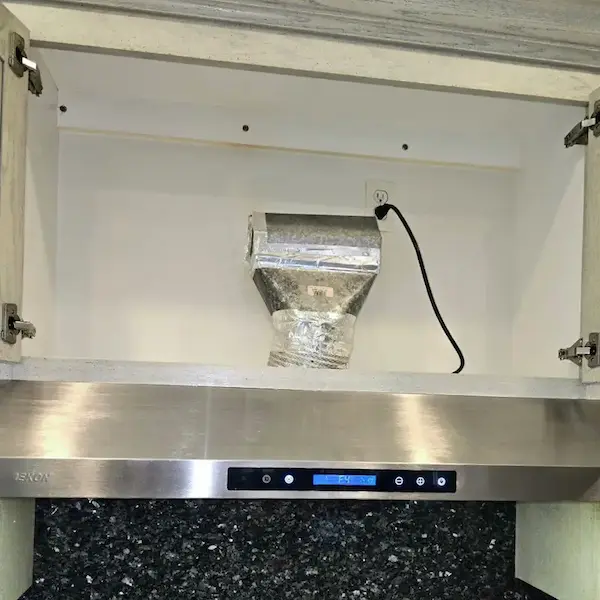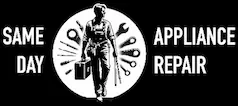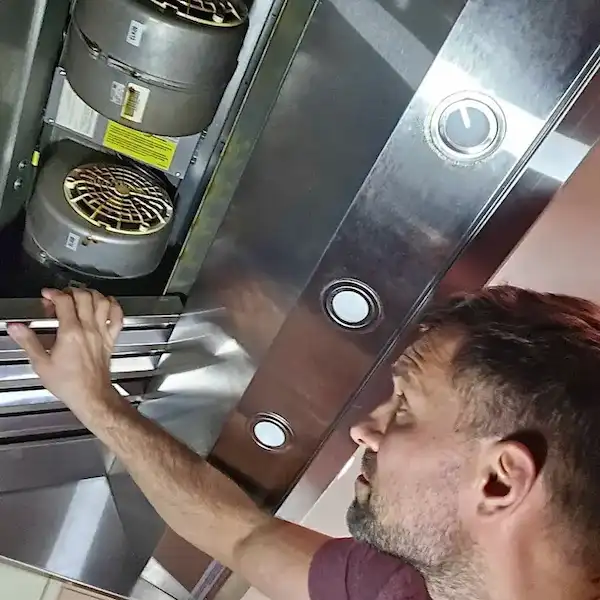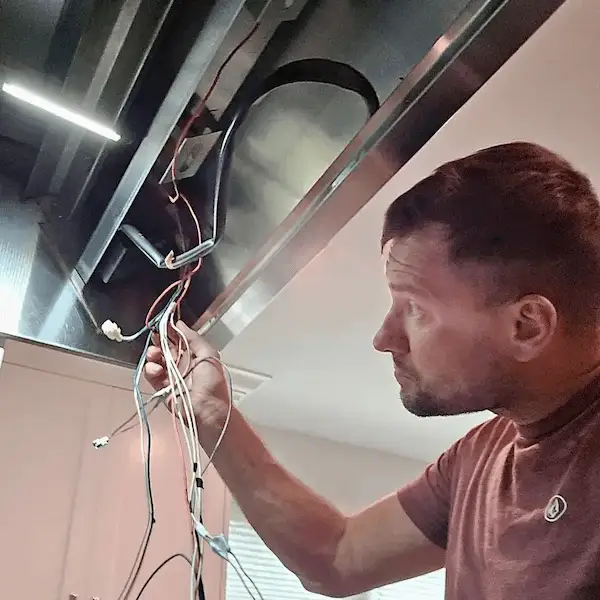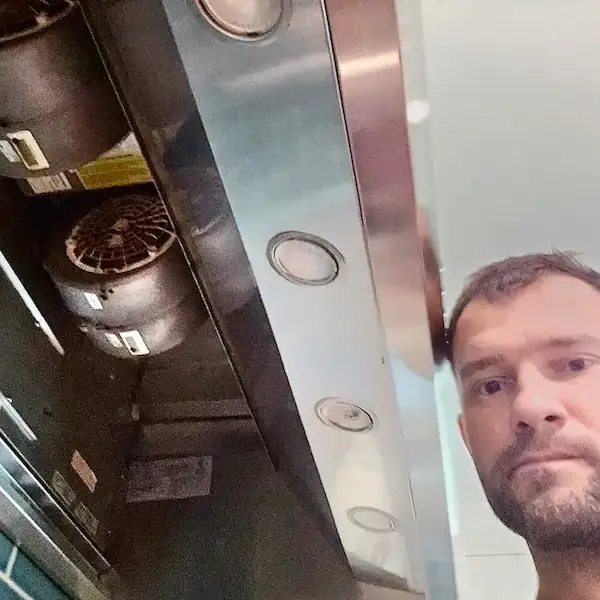FAQs
What are the common problems with range hoods?
︾
︽
Common problems with range hoods often involve issues with
ventilation, fan operation, and electrical components. These problems
can lead to malfunctions, reduced performance, and potential safety
hazards. Some of the most common issues include:
Ventilation Problems:
-
Vent hoods may experience issues with airflow, such as inadequate
ventilation, restricted airflow due to clogged filters, or improper
ductwork installation.
-
Symptoms: Poor ventilation, lingering cooking odors, smoke or steam
buildup.
-
Repair cost: Varies depending on the extent of the ventilation issue
and whether ductwork modifications are required.
Fan Malfunctions:
-
Range hood fans may malfunction, leading to noisy operation, weak
airflow, or failure to turn on.
- Symptoms: Loud or unusual noises, weak airflow, fan failure.
-
Repair cost: Range hood repair cost for fan-related issues can range
from moderate to high, depending on the fan type and the extent of
repairs needed.
Electrical Problems:
-
Electrical components, such as control boards or blower motors, can
malfunction, causing the range hood to operate erratically or not at
all.
-
Symptoms: Control panel malfunction, erratic operation, failure to
power on.
-
Repair cost: Range hood repair cost for electrical issues can vary
depending on the specific component that needs replacement and the
complexity of the repair.
Installation Issues:
-
Improper range hood installation, including incorrect ductwork
installation or insufficient support, can lead to operational
problems.
-
Symptoms: Poor performance, unstable mounting, inadequate
ventilation.
-
Repair cost: Range hood repair cost may involve addressing
installation issues, which can vary based on the scope of the
installation problem and whether modifications are needed.
Other Common Problems:
-
Additional issues may include issues with lighting, such as
burnt-out bulbs or faulty switches, as well as problems with
filters, such as dirty or damaged filters affecting airflow.
-
Symptoms: Dim or non-functional lights, reduced airflow due to
clogged filters.
-
Repair cost: Range hood repair cost for these issues may involve
replacing bulbs, switches, or filters, with costs varying depending
on the specific parts needed.
Addressing these common problems promptly can help ensure the proper
functioning and safety of your range hood. Consulting a professional
for diagnosis and repair is recommended for complex issues or those
involving electrical components.
How much does range hood repair cost?
︾
︽
The cost of range hood repair can vary depending on several factors
such as the type of repair needed, the extent of the damage, and the
specific model of the range hood. Common range hood repair costs may
include expenses for parts such as blower motors, control boards, or
ductwork, as well as labor costs for the service technician's time and
expertise. On average, homeowners can expect to pay anywhere from $100
to $500 or more for range hood repairs, with costs potentially
increasing for more complex issues or higher-end models. However, it's
essential to obtain a detailed estimate from a qualified appliance
repair service to understand the specific costs associated with your
repair needs. Additionally, some repair services may offer free
estimates, allowing you to assess the potential costs upfront before
committing to the repair.
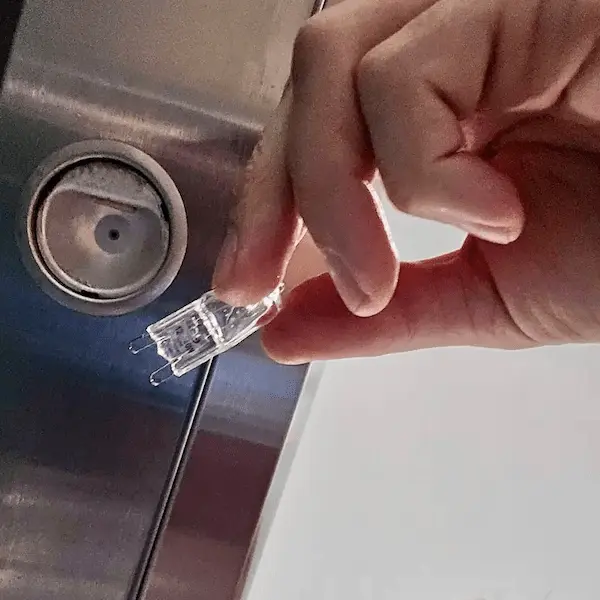
Can I repair my range hood myself?
︾
︽
You can attempt to repair your range hood yourself, depending on the
nature of the problem and your level of expertise. Some range hood
issues, such as cleaning filters or replacing light bulbs, are
relatively simple and can be done by homeowners with basic DIY skills.
However, more complex issues involving electrical components or
ventilation systems may require specialized knowledge and tools.
Before attempting any repairs, it's essential to:
- Identify the Problem: Determine the specific issue with your
range hood by observing symptoms and conducting basic
troubleshooting.
- Refer to the Manual: Consult the manufacturer's manual for
guidance on troubleshooting and repair procedures specific to your
range hood model.
- Gather Tools and Parts: Ensure you have the necessary tools
and replacement parts, such as screwdrivers, multimeter, replacement
switches, or motors, before starting the repair.
- Safety Precautions: Always disconnect power to the range hood
before beginning any repair work to prevent electrical accidents.
Additionally, use appropriate safety gear, such as gloves and eye
protection, when working with electrical components or sharp
objects.
- Know Your Limits: If you're unsure about your ability to
safely and effectively repair the range hood, it's best to seek
assistance from a qualified professional. Attempting complex repairs
without the necessary expertise can lead to further damage or safety
hazards.
By following these guidelines and exercising caution, you can
determine whether DIY repair is suitable for your range hood issue and
proceed accordingly. If in doubt, don't hesitate to contact a licensed
technician or appliance repair service for assistance.
When facing issues with your range hood, it's essential to consider
the potential range hood repair cost before deciding on a course of
action. Whether you're dealing with a malfunctioning blower motor,
control board issues, or ductwork problems, the cost of repair can
vary based on the complexity of the issue and the parts and labor
involved. Attempting to tackle range hood repairs on your own can
sometimes lead to additional expenses if mistakes are made, so it's
wise to enlist the help of a professional appliance repair service.
Appliance repair professionals have the expertise and experience to
diagnose and resolve a wide range of range hood issues efficiently and
effectively. With their excellent customer service and commitment to
quality workmanship, they can ensure that your range hood is back up
and running smoothly in no time. Additionally, many appliance repair
services offer free estimates, allowing you to get an idea of the
potential repair costs upfront. By entrusting your range hood repairs
to experienced professionals, you can save both time and money while
enjoying peace of mind knowing that your appliance is in good hands.
How often should I have my range hood serviced?
︾
︽
Range hood servicing frequency depends on various factors such as
usage, cooking habits, and manufacturer recommendations. As a general
guideline, it's advisable to have your range hood serviced at least
once a year to ensure optimal performance and safety. Regular
servicing helps identify and address any potential issues before they
escalate, prolonging the lifespan of your appliance and maintaining
indoor air quality. However, if you cook frequently or notice signs of
malfunction, such as reduced airflow or unusual noises, consider
scheduling servicing more frequently. Additionally, following the
manufacturer's maintenance schedule outlined in the user manual can
provide valuable insights into recommended service intervals tailored
to your specific range hood model. Consulting with a professional
appliance repair service can also offer personalized recommendations
based on your usage patterns and the condition of your range hood.
Why is my range hood making unusual noises?
︾
︽
Unusual noises from your range hood can indicate various underlying
issues that may require attention. Common reasons for such noises
include:
-
Loose or damaged components: Loose screws, bolts, or fan blades can
cause rattling or vibrating noises. Additionally, worn-out or
damaged parts such as bearings, motors, or belts may produce unusual
sounds when in operation.
-
Accumulation of debris: Buildup of grease, dust, or other debris
within the fan blades, ductwork, or motor can create friction and
result in strange noises during operation.
-
Faulty motor or fan: A malfunctioning motor or fan can produce
grinding, squealing, or humming noises. This could be due to
worn-out bearings, damaged blades, or electrical issues.
-
Improper installation: Incorrect installation of the range hood or
ductwork can lead to structural issues, causing noises such as
creaking, banging, or rubbing against nearby surfaces.
-
Ductwork issues: Damaged, improperly sealed, or obstructed ductwork
can cause airflow restriction, resulting in whistling, hissing, or
flapping noises as air tries to pass through.
To address the issue, start by inspecting the range hood for any
visible signs of damage or loose components. Clean the fan blades,
ductwork, and motor to remove any debris that may be causing friction.
If the problem persists, it's best to consult a professional appliance
repair technician to diagnose and fix the underlying issue. They can
accurately identify the source of the noise and perform any necessary
repairs or replacements to restore proper functioning and quiet
operation of your range hood.
How do I know if my range hood needs repair?
︾
︽
You might need to repair your range hood if you notice any of the
following signs:
-
Reduced airflow: If you notice decreased suction power or airflow
from your range hood, it could indicate a problem with the motor,
fan, or ductwork.
-
Unusual noises: Strange sounds such as grinding, rattling, or
humming coming from the range hood may suggest issues with the
motor, fan, or loose components.
-
Grease buildup: Excessive grease or debris accumulation on the range
hood's filters, interior surfaces, or fan blades can impede
performance and signal the need for cleaning or repair.
-
Visible damage: Cracks, dents, or other physical damage to the range
hood itself may affect its functionality and require repair or
replacement of damaged parts.
-
Ineffective odor removal: If your range hood fails to remove cooking
odors and smoke from your kitchen adequately, it may indicate a
problem with the fan, filters, or ductwork.
-
Electrical issues: Flickering lights, malfunctioning controls, or
electrical sparks from the range hood indicate potential electrical
problems that need prompt attention from a qualified technician.
-
Persistent odors or smoke: Lingering odors or smoke in your kitchen,
even when the range hood is running, could indicate issues with the
ventilation system that require inspection and repair.
If you notice any of these signs, it's advisable to have your range
hood inspected by a professional appliance repair technician. They can
diagnose the problem accurately and recommend the necessary repairs to
restore your range hood's functionality and efficiency.
Is repairing an old range hood worth it, or should I replace it?
︾
︽
When debating whether to repair or replace an old range hood, several
factors come into play for the average homeowner. An old hood may have
worn components and require frequent repairs, leading to increased
average costs over time. If the hood is outdated and lacks modern
features like a recirculating kit or advanced exhaust style, it may
not effectively remove cooking odors and airborne grease, impacting
kitchen air quality. Upgrading to a new hood, especially one with
premium materials and a carbon filter, can enhance ventilation and
save money on future repairs. Considerations such as cabinet space and
kitchen layout also influence the decision-making process. While
repairs may seem like a cost-effective solution initially,
installation costs, including electrical work and exhaust fan
adjustments, can add up. Investing in a new vent hood, whether it's a
ductless range hood or a wall-mounted option, ensures optimal
performance and efficiency in the kitchen. Additionally, consulting
with professionals like electricians who install range hoods can
provide insights into the best course of action for your kitchen
appliances.
Do range hood repairs come with warranties?
︾
︽
Many repair services offer warranties on parts and labor for range
hood repairs. It's essential to inquire about warranty coverage before
hiring a repair technician.
How long does range hood repair take?
︾
︽
The duration of range hood repair can vary depending on the nature of
the problem, the availability of replacement parts, and the expertise
of the repair technician. In some cases, minor repairs such as
replacing a light bulb or fixing a loose screw can be completed
quickly within a matter of minutes to an hour.
However, more complex repairs, such as replacing a malfunctioning
motor, repairing electrical wiring, or addressing significant
structural damage, may take longer. These repairs may require
additional diagnostic testing, ordering specialized parts, and
performing intricate repair work, which can extend the repair process
to several hours or even days.
Additionally, factors such as the technician's workload, scheduling
constraints, and the need for multiple service visits can also affect
the overall repair timeline. It's essential to discuss the estimated
repair time with your appliance repair technician upfront to ensure
that you have realistic expectations and can plan accordingly.
Can I prevent range hood problems with regular maintenance?
︾
︽
Yes, regular maintenance can help prevent range hood problems and
ensure optimal performance. Here are some maintenance tips to keep
your range hood in good condition:
-
Clean the filters: Grease and debris can accumulate in the filters
over time, reducing airflow and efficiency. Clean or replace the
filters regularly according to the manufacturer's recommendations.
-
Wipe down the exterior: Clean the exterior surfaces of the range
hood regularly to remove grease, dust, and grime. Use a mild
detergent and a soft cloth to avoid scratching the finish.
-
Check the ductwork: Inspect the ductwork for any signs of damage,
leaks, or blockages. Clear away any obstructions and repair any
damaged sections to ensure proper ventilation.
-
Test the lights and fan: Periodically test the lights and fan to
ensure they are working correctly. Replace any burned-out bulbs and
lubricate the fan motor if necessary.
-
Inspect the wiring: Check the wiring and electrical connections for
any signs of wear, fraying, or damage. Repair or replace any damaged
wires to prevent electrical issues.
-
Schedule professional maintenance: Consider scheduling regular
maintenance visits with a qualified appliance repair technician.
They can inspect the range hood components, perform any necessary
adjustments or repairs, and ensure everything is working properly.
By following these maintenance tips, you can help prevent range hood
problems and extend the lifespan of your appliance.
How do you troubleshoot a range hood that won't turn on?
︾
︽
To troubleshoot a range hood that won't turn on, follow these
steps:
-
Begin by checking the range hood's electrical connection and
breaker. Turn off the breaker for the range hood at your electrical
service panel.
- Confirm the power is off by attempting to turn on the fan.
-
Inspect the power outlet where the range hood is plugged in. Ensure
the plug is fully inserted, and the outlet is functional.
-
The problem may be a blown internal fuse if the outlet works.
Contact a professional to replace the fuse.
-
Examine the wire harness connections between the control board and
the fan motor. Reconnect any loose wires and repair any damaged
ones.
-
Check the electronic control board for burn marks, which indicate a
potential failure. If needed, replace the board.
-
If your range hood utilizes a user interface control to activate the
fan, consider replacing the user interface if it fails to send
signals to the control board.
-
If the fan still doesn't turn on after these checks, you might need
to replace the fan motor itself.
In summary, to troubleshoot a range hood that won't turn on, assess
the power supply, inspect internal wiring and components, and consider
replacing faulty parts like the control board, user interface, or fan
motor as necessary.
How to check if the range hood is properly installed?
︾
︽
To ensure a range hood is properly installed, follow these steps:
-
Activate the range hood and test both the fan and light
functionalities to ensure they are operational.
-
Inspect the duct outside and check for airflow to confirm adequate
ventilation.
-
Ensure the range hood is securely mounted to the wall or cabinet,
tightening all screws for stability.
-
Examine the wiring connections to ensure they are secure and free of
loose or exposed wires.
-
Confirm the damper's functionality, ensuring it opens and closes
properly with fan activation.
-
Check that filters and grease guards are correctly installed and
securely in place.
-
Measure the distance between the range hood and the cooking surface
to verify it meets the manufacturer's recommended clearance.
-
Ensure the range hood is appropriately sized for the cooking surface
below it, with a CFM rating matching the kitchen size.
-
Verify proper venting to the outside with no obstructions in the
ductwork.
By following these steps, you can thoroughly assess the range hood's
installation for correct placement and functionality.
How to check if the range hood is properly vented?
︾
︽
To ensure proper ventilation of a range hood, follow these steps:
-
Activate the range hood and feel for air pushing out of the exterior
vent to confirm adequate ventilation.
-
Inspect the ductwork outside and ensure the damper, if present,
opens and closes properly when the fan operates.
-
Verify that the ductwork vents outside and doesn't recirculate air
back into the kitchen. Ensure it doesn't terminate indoors.
-
Check the ductwork for smooth interior surfaces and ensure it's
airtight without any leaks or blockages.
-
Confirm that the duct size matches the range hood's specifications
and that the total vent length doesn't exceed the manufacturer's
recommendation.
-
For ductless or recirculating range hoods, ensure they're installed
according to the manufacturer's instructions as they don't require
outdoor venting.
By following these steps, you can ensure your range hood is properly
vented, effectively removing cooking exhaust from your kitchen.
What are the signs that a range hood is not properly vented?
︾
︽
Here are the key signs that indicate a range hood is not properly
vented:
-
Inadequate airflow and poor performance: If the range hood fails to
effectively remove smoke, odors, and grease from the kitchen, it
likely isn't vented properly. This can be caused by clogged filters,
damaged internal components, or a stuck damper, all of which
restrict airflow.
-
Recirculating air indoors: A range hood that recirculates air back
into the kitchen instead of venting it outside is not properly
vented. While ductless or recirculating hoods are designed for this
purpose, a properly vented hood should exhaust air outdoors.
-
Excessive noise or vibration: Unusual noises or excessive vibration
from the range hood may indicate issues with the ductwork or fan
that hinder proper venting. Debris, loose parts, or a damaged fan
can contribute to noisy operation in a poorly vented hood.
-
Buildup of grease and moisture: Significant accumulation of grease
and moisture inside the range hood suggests ineffective removal of
these cooking byproducts. Proper venting should prevent excessive
buildup within the hood.
In summary, if you notice poor airflow, recirculation of air,
excessive noise/vibration, or grease/moisture buildup, it's likely
that your range hood isn't properly vented, and you may need to
address ventilation issues to ensure efficient operation.
What are the health risks of not properly venting a range hood?
︾
︽
The key health risks of not properly venting a range hood include:
-
Respiratory issues: Cooking releases pollutants such as carbon
monoxide, nitrogen dioxide, and particulate matter into the air.
Without proper ventilation, these pollutants can accumulate and
worsen respiratory problems like asthma.
-
Allergies and irritation: Smoke, steam, and grease from cooking may
contain allergens and irritants that can trigger allergic reactions
or cause irritation to the eyes, skin, and throat if not properly
vented.
-
Headaches and nausea: The buildup of cooking-related pollutants in
poorly ventilated kitchens can lead to symptoms like headaches,
fatigue, and nausea.
-
Increased fire risk: Grease buildup resulting from inadequate
venting can raise the fire hazard in the kitchen, as grease is
flammable, posing a serious safety risk.
-
Reduced indoor air quality: Without a properly functioning range
hood to vent cooking byproducts outside, the overall indoor air
quality in the home may suffer, potentially leading to long-term
health problems.
In summary, the health risks of not properly venting a range hood
encompass respiratory issues, allergies, irritation, headaches, fire
hazards, and diminished indoor air quality, all of which can adversely
affect the health and safety of occupants.
What are the different types of range hoods and their venting
options?
︾
︽
Based on the search results provided, here are the main types of range
hoods and their venting options:
Wall Mounted Range Hoods:
- Mounted on the wall above the cooking surface.
-
Can be vented to the outside (ducted range) or recirculate the air
back into the kitchen (ductless/recirculating).
Island Range Hoods:
- Suspended from the ceiling above a kitchen island.
-
Typically require ducted venting to the outside due to their
location.
Range Hood Inserts:
- Designed to be installed into custom cabinetry or hoods.
-
Venting options include ducted or ductless hoods based on the
installation.
Under Cabinet Range Hoods:
-
Installed underneath overhead cabinets above the cooking surface.
-
Available in ducted or ductless models depending on the preference.
Professional-Grade Range Hoods:
- Built for high-performance cooking with robust ventilation.
-
Typically ducted to the outside for efficient removal of cooking
byproducts.
Convertible Range Hoods:
-
These hoods offer the flexibility to be configured for either ducted
or ductless operation based on the homeowner's preference and
kitchen setup.
-
Ideal for situations where the venting requirements may change or
where ductwork installation is not feasible.
Additionally, it's important to consider the following factors when
choosing the venting option for a range hood:
-
Kitchen Layout: The layout of the kitchen, including the location of
the cooking surface and the presence of cabinetry or an overhead
hood, can influence the choice of venting method.
-
Ventilation Efficiency: Ducted venting typically provides more
efficient ventilation by expelling cooking byproducts directly
outside. However, ductless range hoods can still effectively filter
and recirculate air, albeit with slightly lower efficiency.
-
Installation Considerations: Ducted venting requires access to an
exterior wall or roof for proper installation of ductwork. Ductless
range hoods may be easier to install in kitchens where ductwork
installation is challenging or not possible.
-
Maintenance Requirements: Ducted systems may require less frequent
maintenance since they expel cooking byproducts outside. Ductless
systems require regular filter replacements to maintain optimal
performance.
The key venting options are:
- Ducted/Vented: Expels air to the outside through ductwork.
-
Ductless/Recirculating: Filters and recirculates air back into the
kitchen.
-
Convertible hoods: Can be configured for either ducted or ductless
operation.
The choice of venting method depends on factors such as the range hood
model, kitchen layout, and homeowner preferences. While ducted venting
is generally more effective at eliminating cooking odors and grease,
ductless models offer flexibility for certain kitchen designs.
What are the benefits of a higher cfm range hood?
︾
︽
Here are the main benefits of opting for a higher CFM (Cubic Feet
per Minute) range hood:
-
Enhanced Air Quality: A higher CFM range hood excels in efficiently
removing smoke, steam, odors, and other cooking byproducts from the
kitchen environment. This capability ensures that the air remains
fresher and cleaner, contributing to a more pleasant cooking
experience and healthier indoor air quality overall.
-
Greater Capacity for Larger Spaces: Higher CFM range hoods,
typically rated at 500-600+ CFM, are particularly well-suited for
larger kitchens and open floor plans. These models can effectively
handle the demands of heavy-duty cooking activities, such as
grilling, stir-frying, and deep-frying, dispersing cooking fumes and
heat efficiently.
-
Adjustable Performance: Unlike lower CFM models, higher CFM range
hoods often offer the flexibility to adjust fan speeds according to
specific cooking needs. This versatility allows users to tailor
ventilation levels to match the intensity of cooking, ensuring
optimal performance and energy efficiency.
-
Improved Ventilation for Gas Cooktops: For kitchens equipped with
gas cooktops, which tend to produce more fumes and require robust
ventilation, higher CFM range hoods are particularly beneficial.
These models provide superior ventilation, effectively capturing and
expelling cooking byproducts to maintain a comfortable and safe
cooking environment.
-
Reduced Maintenance Requirements: While higher CFM range hoods may
require more frequent maintenance due to their increased usage,
their superior performance often offsets this need. By efficiently
removing airborne particles and grease, these hoods help minimize
the buildup of residues, leading to easier and less frequent
cleaning.
Overall, investing in a higher CFM range hood offers multiple
advantages, including enhanced air quality, suitability for larger
spaces, adjustable performance, improved ventilation for gas cooktops,
and reduced maintenance requirements, making it a preferred choice for
those seeking optimal ventilation and cooking comfort.
What factors should I consider concerning a new island range hood
installation, and how can I ensure I get accurate estimates for the
installation cost?
︾
︽
When installing a new island range hood, several factors come into
play. First, consider the ventilation requirements, as island hoods
typically require ductwork to vent to the outside. Ensure that your
kitchen layout allows for the necessary ductwork installation and that
there is proper clearance above the cooking surface. Additionally,
consider the electrical wiring needs to power the range hood and any
additional features like lights or fans. To get accurate estimates for
the installation cost, it's essential to contact reputable
professionals who specialize in island range hood installations. They
can provide free estimates based on factors such as the size and
weight of the hood, the complexity of the installation process, any
required electrical work, and labor costs. By obtaining multiple
estimates and comparing them, you can ensure you're getting a fair
price and excellent customer service for your island range hood
installation.
What factors should be considered when installing range hoods in a
kitchen renovation?
︾
︽
When considering kitchen renovations, it's essential to include the
installation of range hoods in your plans. Whether you opt for island
range hoods or wall-mounted designs, proper installation ensures
optimal performance and ventilation. Island range hood installation
may require additional considerations due to the need for ductwork and
electrical wiring. However, ductless range hoods offer flexibility in
installation as they don't require ductwork, making them suitable for
various kitchen layouts. Before proceeding, it's advisable to research
the range hood installation cost to budget effectively. Whether you
choose ductless or ducted hoods, ensuring accurate estimates for
installation costs is crucial. Additionally, when installing
wall-mounted range hoods or cabinet insert range hoods, professional
installation services can streamline the process and guarantee optimal
performance.
When planning a kitchen renovation, selecting the right kitchen range
hood is crucial for maintaining indoor air quality and keeping the
cooking area clean. Depending on the kitchen layout, a ducted range
hood might be necessary to efficiently vent smoke, steam, and odors
outside. Ductless hoods offer flexibility in installation as they
don't require ductwork, making them suitable for apartments or homes
where duct installation is challenging. For commercial settings, a
proper vent hood installation is essential to meet safety standards
and ensure effective ventilation in high-use kitchen environments.
Electricians may be needed to install range hoods securely, especially
for wall-mounted or cabinet insert models. Understanding the cost to
install a new range hood is vital for budgeting purposes, as prices
can vary depending on the type and complexity of installation.
Convertible range hoods provide versatility, allowing homeowners to
switch between ducted and ductless configurations as needed. When it
comes to island range hood installation, professional installation is
often recommended due to the complexity of mounting and venting.
Overall, investing in a quality hood installation ensures proper
functionality and enhances the overall cooking experience.
It's essential to assess additional costs and requirements such as
extension cords for electrical connections and potential cost factors
like the need for specialized ductwork. For kitchens with ducted
ranges, ensuring the duct size matches the range's specifications is
crucial for optimal performance. Additionally, checking the control
board functionality ensures smooth operation of the range hood.
Installation labor costs may vary based on factors such as complexity
and location. Homeowners should be aware of average costs associated
with hood installations to budget accordingly. When installing a range
hood over a kitchen island, a higher CFM rating may be necessary to
effectively capture cooking pollutants. Understanding the minimum CFM
requirements ensures proper ventilation for the kitchen space.
Calculating the total cost of installation, including materials and
labor, provides a comprehensive view of the investment needed. To
mitigate issues like airborne grease accumulation, under cabinet hoods
offer efficient ventilation solutions while potentially incurring
higher costs due to installation complexities.
How to choose a kitchen range hood?
︾
︽
When selecting a range hood (also known as kitchen exhaust fan) for
your kitchen, several factors should be considered to ensure optimal
performance and efficiency. Begin by assessing the available space and
layout, especially if you have limited cabinet space or prefer an
under-cabinet design. For kitchens with existing ductwork, a ducted
range hood may be the most effective option for venting hot air and
cooking odors outside. Alternatively, if ductwork is not available or
difficult to install, a ductless range hood with a charcoal filter can
efficiently recirculate air while removing airborne particles.
Consider the size of your kitchen and cooking area in square footage
to determine the appropriate airflow capacity needed for the range
hood. This will influence both the selection of exhaust fans and the
overall ventilation power required for optimal performance. Vented
hoods are typically recommended for larger kitchens with higher heat
output from kitchen appliances.
When comparing hood installation costs, factor in both the purchase
price of the hood and any additional expenses such as professional
installation by electricians who install range hoods. The cost to
install a hood may vary depending on the complexity of the
installation, including any modifications required for existing
cabinetry or ductwork.
Evaluate the features and capabilities of different range hood models,
including options for wall-mounted range hoods, cabinet range hoods,
and cabinet insert range hoods. Look for advanced features such as
adjustable fan speeds, integrated lighting, and easy-to-clean filters
to enhance the functionality of your kitchen hood.
In summary, choosing the right range hood involves considering factors
such as ventilation method, installation costs, square footage, and
desired features to ensure it effectively removes hot air and odors
while complementing your kitchen appliances and overall kitchen
design.
How to measure square footage for a range hood installation?
︾
︽
To measure the square footage for a range hood installation, begin by
assessing the area where the hood will be placed, whether it's under a
cabinet or on a wall. Measure the length and width of the designated
space to calculate the square footage. Consider the type of hood
you're installing—whether it's a kitchen hood, vent hood, or
wall-mounted range hood—as different styles may require varying
measurements.
For kitchen range hoods, particularly those installed under cabinets,
measure the width of the cabinet or the space where the hood will fit.
In the case of wall-mounted range hoods, measure the area on the wall
where the hood will be mounted, accounting for any obstructions like
cabinets or appliances. This step ensures you have the precise square
foot measurements necessary for fitting the hood correctly.
Once you've determined the square footage, factor in the size and
capacity of the hood you're installing. While most range hoods are
designed to fit standard kitchen sizes, larger kitchens may
necessitate more powerful hoods. This consideration will affect the
overall hood installation cost, encompassing both the price of the
hood itself and any additional expenses such as electricians' fees for
installation. Ensure that the square foot coverage of the hood matches
the needs of your kitchen space for optimal functionality.
If you're opting for a ducted hood, take into account the location of
existing ductwork or the requirement for commercial vent hood
installation, particularly for commercial kitchens. For ductless
hoods, include the cost of a kitchen exhaust fan or charcoal filter to
recirculate the air effectively.
In summary, measuring square footage for a range hood installation
involves evaluating the installation space, choosing an appropriately
sized hood, and factoring in associated costs like installation fees
and ventilation requirements—all of which contribute to a successful
and efficient range hood installation.
What are the options for kitchen ventilation, and what factors
should be considered when choosing and installing a range hood?
︾
︽
When considering the upgrade of your kitchen ventilation, choosing the
right type of hood can make all the difference. Whether it's a kitchen
hood, wall-mounted range hood, or under cabinet model, each has unique
benefits and installation considerations. Here's a comprehensive look
at the options and what you might expect in terms of hood installation
cost and effectiveness.
Under Cabinet Range Hoods
Under-cabinet range hoods are a popular choice due to their seamless
integration into kitchen designs. When installing an under-cabinet
range hood, you must consider the cost, the job's complexity, and
whether new ductwork is needed. Typically, under-cabinet hoods are
effective for smaller kitchens, and the cost to install them can vary
based on lower compared to more complex setups like commercial vent
hoods.
Cabinet Range Hood
A cabinet range hood is installed within the cabinetry and can either
be a cabinet insert range hood, which is built into the cabinetry, or
a standard model that fits under the cabinet space. The style can
influence the cost of installing a cabinet range hood and whether
additional cabinetry modifications are needed. For those upgrading to
a new range hood, consider a cabinet range hood, which might offer a
blend of aesthetic appeal and functionality.
Wall Mounted and Commercial Vent Hoods
A wall-mounted range hood or a commercial vent hood might be
appropriate for larger kitchens or those with heavy cooking needs.
These vent hoods often require extensive installation, including
ductwork and external venting. The range hood installation cost for
these models will be higher, especially if professional electricians
install range hoods to ensure compliance with local building codes.
Commercial vent hood installation is particularly complex and should
only be handled by professionals.
Ducted Hoods
Ducted hoods, which can be part of a cabinet range hood setup or a
wall-mounted range hood, are known for their efficiency in venting
kitchen fumes. The hood installation cost for ducted hoods can be
significant, especially if ducts need to be routed or extended.
However, for a new range hood, the investment in a ducted system often
pays off in terms of improved air quality and reduced kitchen odors.
Vent Hoods and Installation Costs
When planning to install vent hoods, including under-cabinet or
cabinet range hoods, it's crucial to understand the full installation
cost. This cost includes not only the vent hood itself but also the
cost to install it, which can involve electrical work, ductwork, and
adjustments to cabinetry. Getting a detailed quote that covers all
these aspects is essential for those installing a new range hood.
In summary, whether you opt for an under cabinet, cabinet range hood,
or a more extensive commercial vent hood installation, understanding
the types, functionality, and range hood installation cost is vital.
Each option offers different benefits, and the right choice depends on
kitchen size, cooking habits, and budget. Always consider professional
installation to ensure your vent hood operates efficiently and safely.
What are the most reliable brands of range hoods?
︾
︽
-
Faber - A leading manufacturer of high-quality, innovative range
hoods.
-
Broan-NuTone is a leading manufacturer of residential ventilation
products, including range hoods, known for their quality and
durability.
-
Zephyr is a brand that specializes in high-end, designer range hoods
with a focus on style, performance, and innovation.
-
KitchenAid - A well-known brand of kitchen appliances that offers a
range of range hoods.
-
GE - A popular brand of kitchen appliances that offers a range of
range hoods with various features.
-
Bosch - A German-based company that produces range hoods known for
their quiet operation and powerful ventilation.
-
Whirlpool is a well-known kitchen appliance brand offering various
range hoods with multiple features.
-
Viking - A luxury brand specializing in high-end, commercial-grade
kitchen appliances, including range hoods.
-
Wolf - A luxury brand that offers high-end, designer range hoods
with unique features.
-
Thermador - A high-end brand that offers a designer range of hoods
with unique features.
-
Vent-A-Hood - A brand offering high-performance range hoods for
residential and commercial applications.
-
AKDY - A budget-friendly brand that offers affordable range hoods
with various features.
-
Cosmo - Another budget-friendly brand that offers affordable range
hoods with various features.
- Kucht - A high-end brand that offers a designer range of hoods with unique features.
